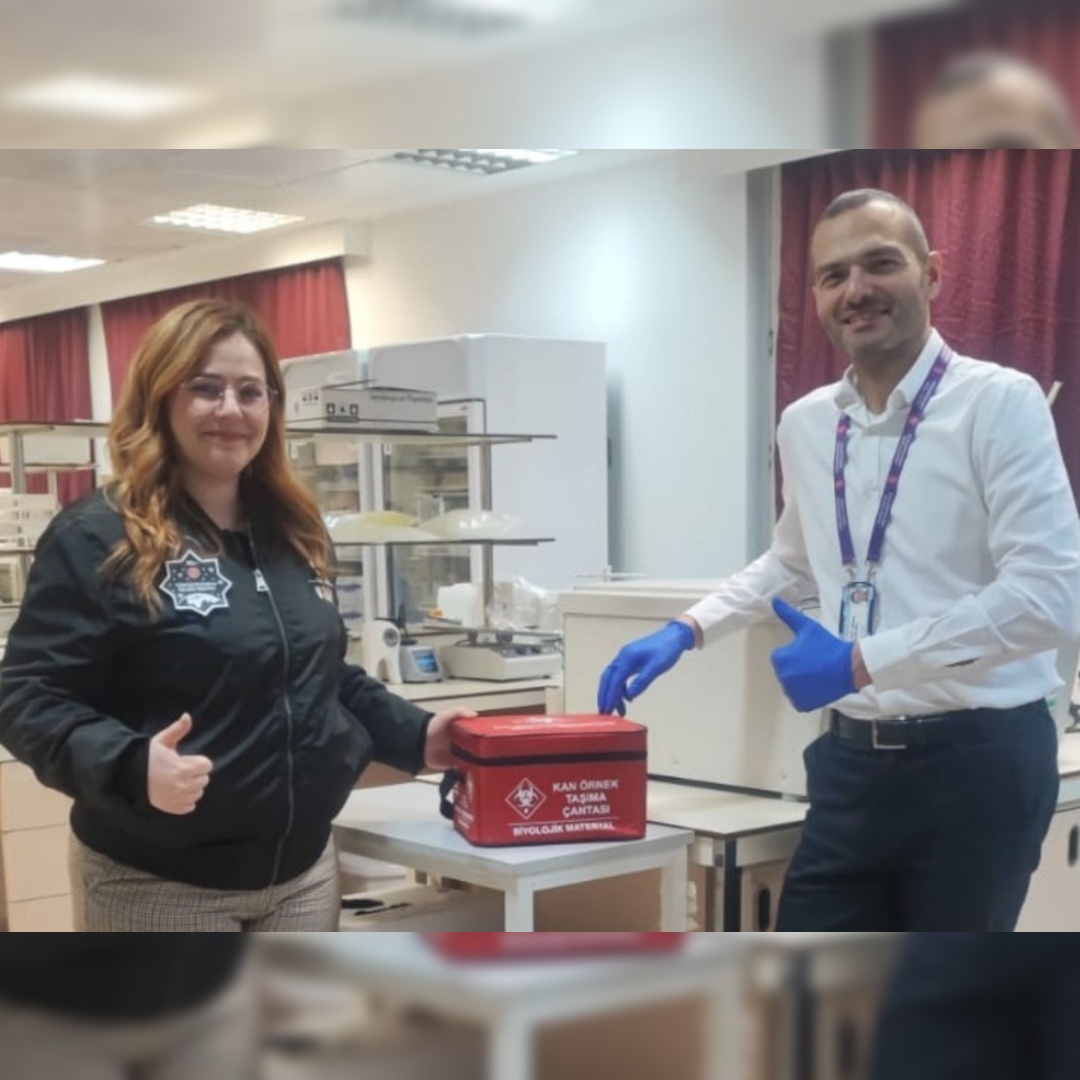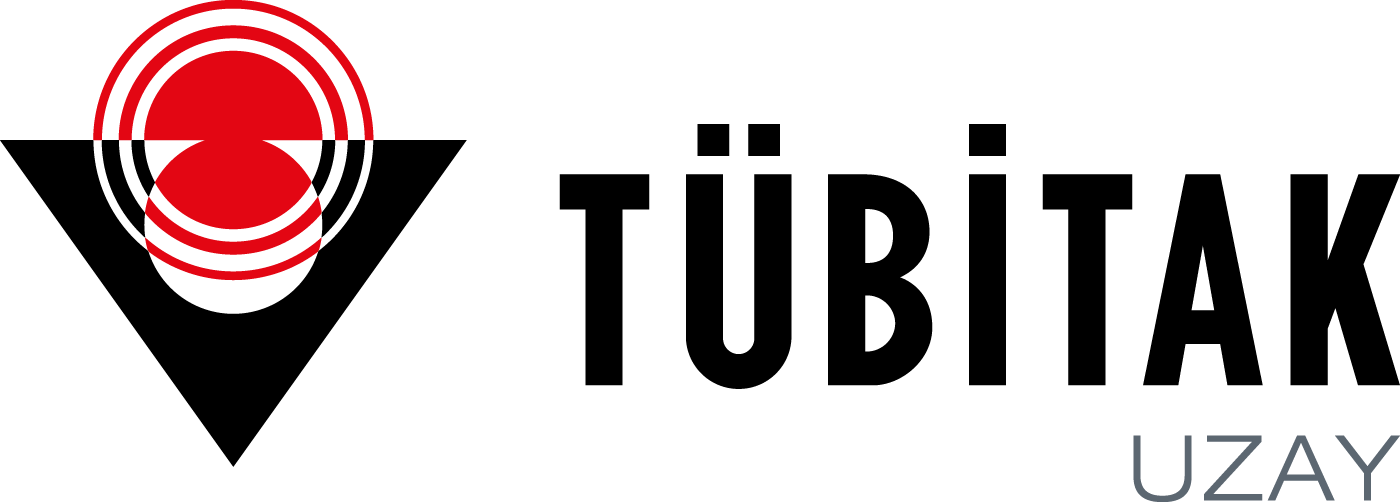UZAY
Human Research
IVMERAD
METU IVMER
Karadeniz Technical University
Prof. Dr. M. Bilge Demirköz
Dr. Selcen Uzun Duran, Egecan Karadöller, Gupse Aköz
IvmeRad is a wearable, smart, and active personal ionizing radiation dosimeter adapted to spaceflight for this mission. IvmeRad was designed with support from TÜBİTAK Space Technologies Research Institute (TÜBİTAK UZAY) for use at hospitals and radiological centers, where patients are actively threated by radiopharmaceuticals. Radiopharmaceuticals are agents used to diagnose various medical problems or treat certain diseases, such as cancer. IvmeRad applies Internet of Things (IoT) technologies to radiation dosimetry to create an affordable, lightweight, and easy to use device that actively tracks ionizing radiation exposure and identifies potential radiation hazards faster than traditional methods. IvmeRad will fly in a custom-built pocket of Tuva’s TUA flight suit. IvmeRad is designed and produced by METU IVMER, supported by Karadeniz Technical University, and tests and logistics are supported by TÜBİTAK UZAY.
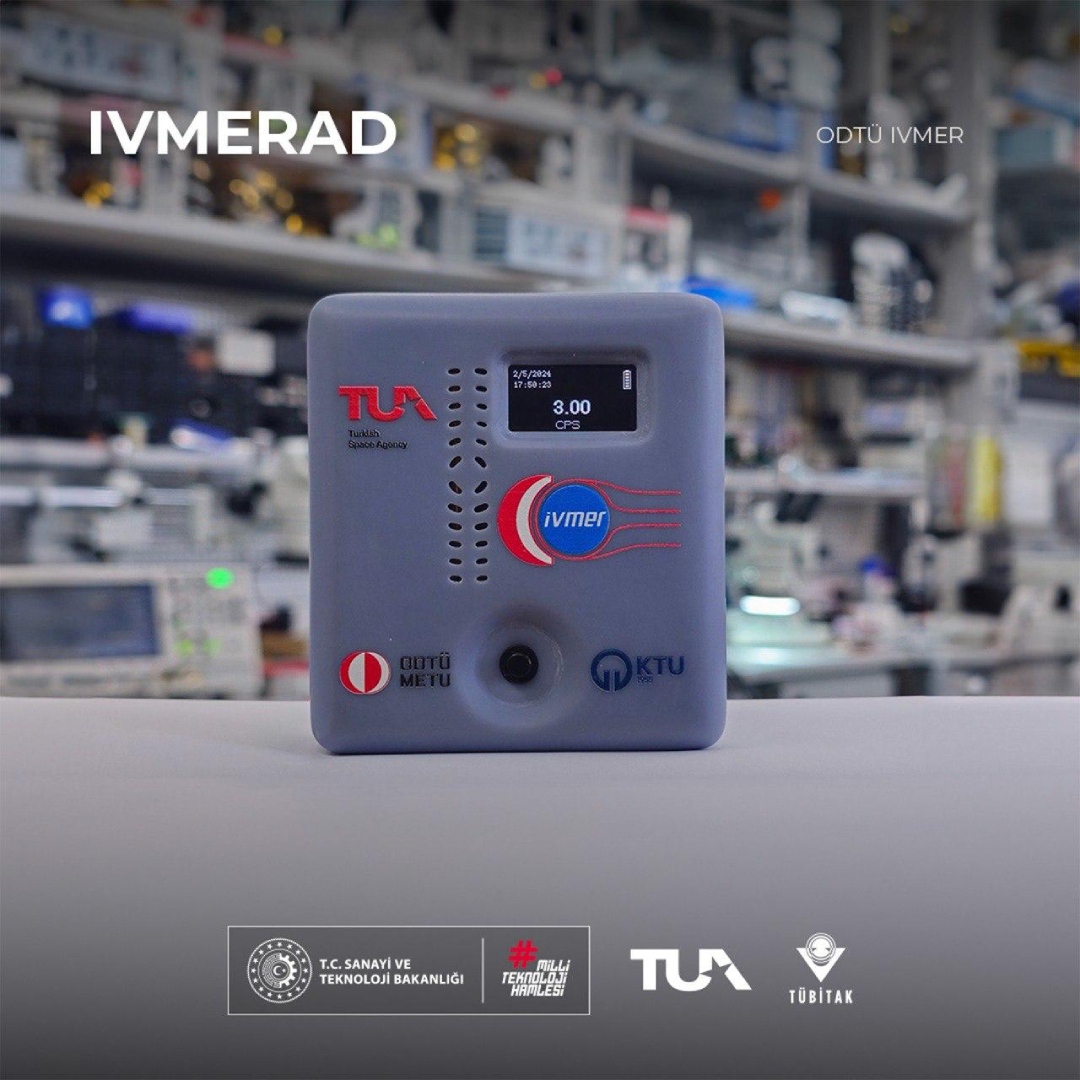
UZİKAT
Spaceflight Use of Insulin, Tests, and Equipment (SUITE)
Axiom Space
TUA
Dr. John Marshall and Mr. Alex Rubin
To date, no individual with insulin-dependent diabetes has flown to low Earth orbit (LEO). This experiment serves as a steppingstone to support astronauts with insulin-dependent diabetes and demonstrates a capability necessary for maintenance therapy and hyperglycemic states in insulin-dependent people with diabetes. Commercial spaceflight and the research flown on these missions could open space to people with diabetes who previously have not been eligible to travel to LEO. This human-tended experiment includes two commercially available insulin pens, which will each be secured in a custom 3D-printed container during flight. During the flight, Tuva will retain the insulin pens in his flight suit, dial an insulin dose, and dispense insulin from each pen into a collection container to study the accuracy of dose dispensation in microgravity.
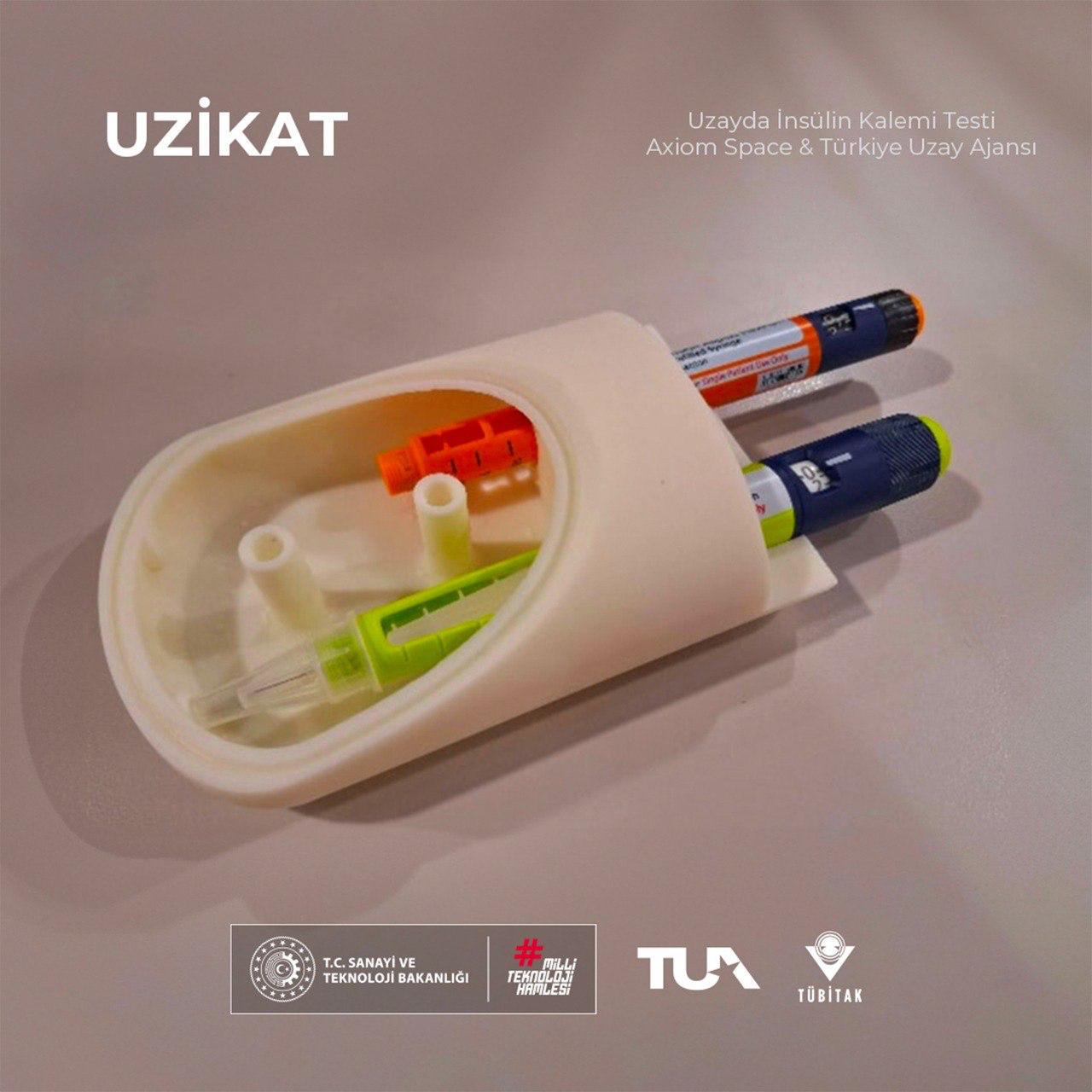
BEACON
BEACON-R - Behavioral, Affective, Cognitive and Neurophysiological Responses to Spaceflight
Harvard Medical School
University of Health Science of Türkiye
Dr. Vladimir Ivkovic
Ms. JoAnna Pollonais, Dr. Şükrü Hakan Gündüz, Nazım Ata
Part of BEACON-R will see Tuva wear NINscan during the Galactic 07 mission. This will be the first spaceflight for NINscan: A custom developed brain and physiological monitoring system originally developed for NASA and used in extreme environments, including parabolic flight. NINscan headgear secures brain activity-monitoring sensors to Tuva’s head and has electrode pads and leads for monitoring heart activity, allowing researchers to complete the first-ever continuous monitoring of blood and cerebrospinal fluid flow in all phases of spaceflight. This ‘first’ is essential for understanding the mechanics behind spaceflight associated neuro-ocular syndrome (SANS)—a major biomedical risk to astronauts involving changes in brain pressure and vision—and studying emotional and physiological responses associated with the ‘Overview Effect’. BEACON-R will provide us with insight on mitigating spaceflight biomedical risks and ways of managing neurological and psychiatric disorders in clinical practice on Earth.
YUVA
Vesicle Analysis in Suborbital Flight
Bilkent University National Nanotechnology Research Center (UNAM)
Dr. Fatih Inci
Murat Güngen, Nedim Hacıosmanoğlu
Extracellular vesicles (EVs) are “lipid shuttles” secreted from parental cells and contain a diverse array of biomolecules.
As part of the YUVA experiment, researchers will collect blood and urine specimens from TUA’s astronaut pre- and post-flight to isolate circulating EVs with their state-of-the-art microfluidic chip. This chip is able to isolate EVs from low-volume of samples by minimum instrumentation.
Downstream proteomic and transcriptomic analyses will scrutinize the isolated EVs, detecting variations in expression levels to unveil microgravity-induced alterations in EV-based communication. As the next step of the investigation, researchers aim to apply space-travel-induced EVs to healthy human cells to show that cellular adaptation occurring during space travel could be transferred to the healthy cells, and potentially in the future, could be employed to prepare astronauts for space missions long before reaching space conditions.
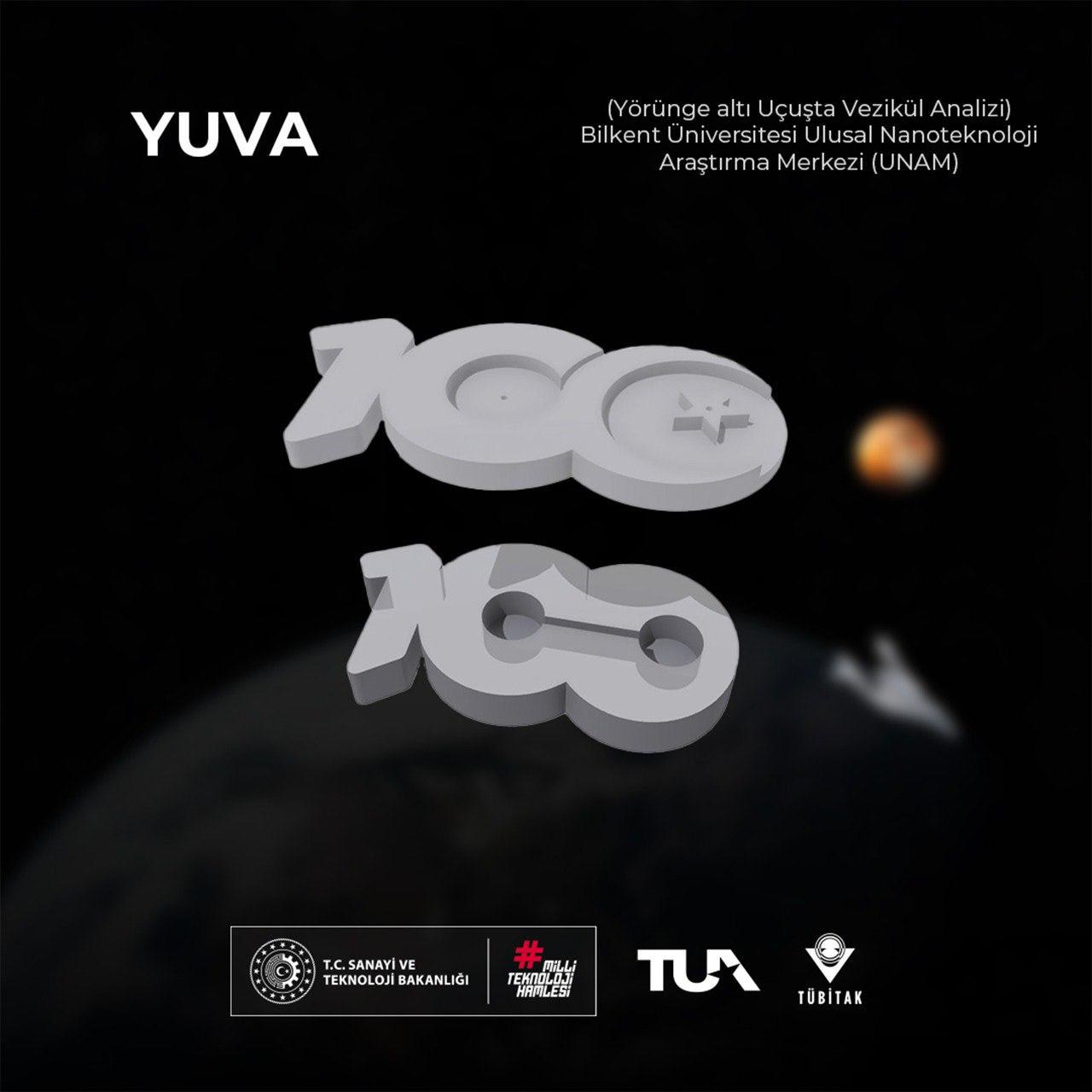
MESSAGE
Microgravity Associated Genetics Research
Üsküdar University
Dr. Cihan Taştan
Büşra Tekirdağlı, Ebru Çam, Özge Demir, Gamze Gülden, Berranur Sert, Fatmanur Erkek
The MESSAGE (Microgravity Associated Genetics Research Group) project on Ax-3 is interested in assessing microgravity-associated changes in gene expression in human immune system T-cells collected from the astronauts.
In order to identify gravity-sensitive genes that may contribute to the immune disorder associated with space flight, pre and in-flight samples of blood is acquired from each subject at selected time points to be investigated by performing transcriptome analysis.
After the space mission, CRISPR gene editing technologies are planned to be applied to knock out genes in T-cells found to be upregulated by microgravity.
The researchers also aim to produce immune cells with the observed microgravity-associated gene changes by using an acoustic levitation device on the ground to mimic microgravity and explore the cells' changes in proliferation, survival, stress responses, anti-cancer and cytokine release profiles at a cellular level.
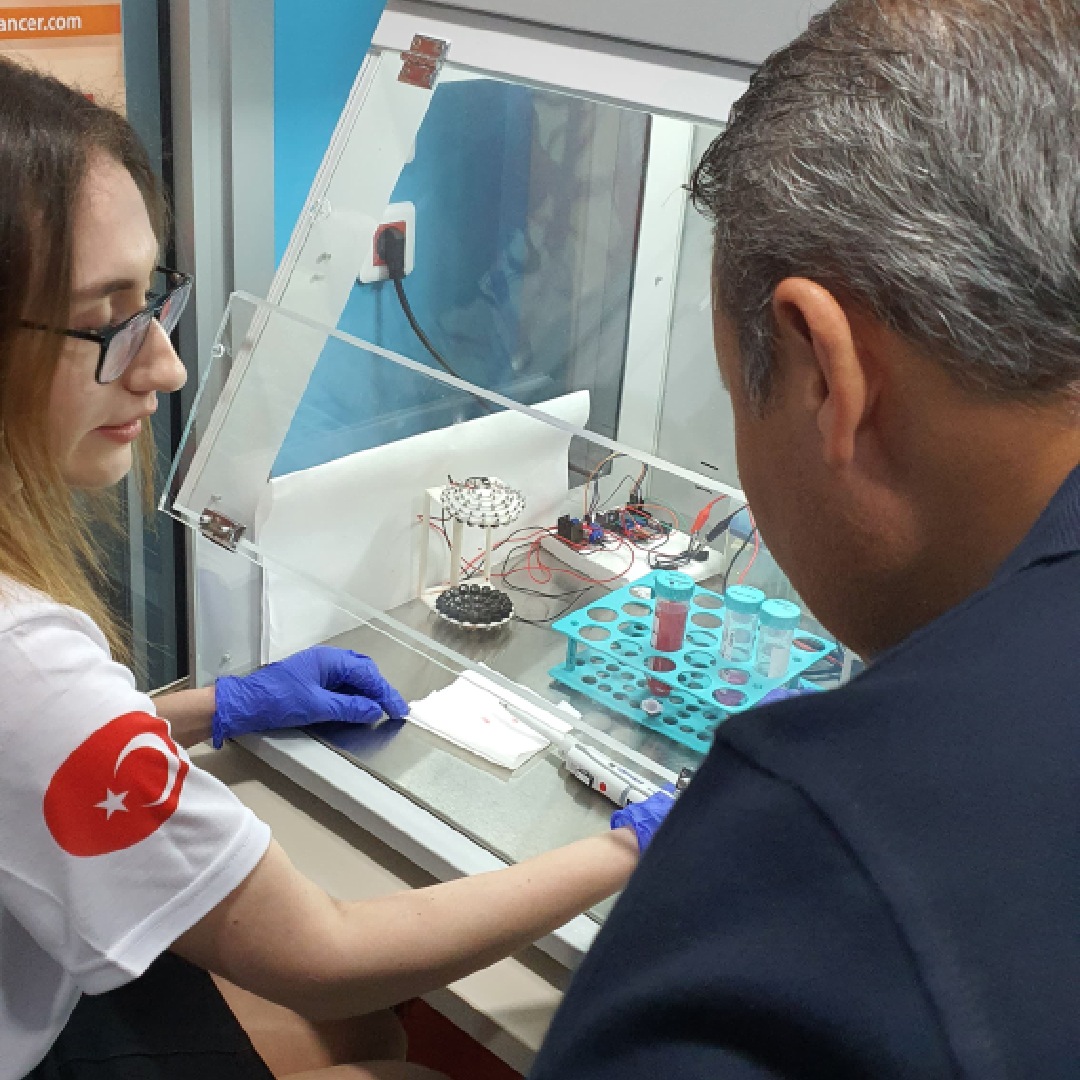
METABOLOM
Analysis of Changes in Metabolome/Transcriptome of Astronauts (Plasma, Saliva and Urine) on Space Missions and Creation of National Omics Datasets
Ankara University
Prof. Dr. Emel Emregül
Oğuzhan Durmaz, Prof. Dr. Emirhan Nemutlu, Assoc. Dr. Evren Özçınar, Assoc. Dr. Burak Derkuş, Dr. Nihan Akdoğan, Dr. Cemil Can Eylem
Spaceflight can be a stressful experience for the human body to adapt to changes in microgravity, such as physical demands, nutritional changes, and lack of sleep. The physiological changes can be monitored by profiling the "'omics" of the body — the changes in gene expression (genomics), protein expression (proteomics) or metabolites (metabolomics). A better understanding of these changes in an individual's response to spaceflight can help to develop personalized countermeasure procedures that can optimize the safety and performance of each astronaut.
METABOLOM aims to gather data from the blood, urine and saliva samples of AX-3 crew members collected preflight and postflight; to better understand omics changes seen after spaceflight and inform researchers working on gravitational physiology, aviation, and space medicine on best practices for astronaut care.
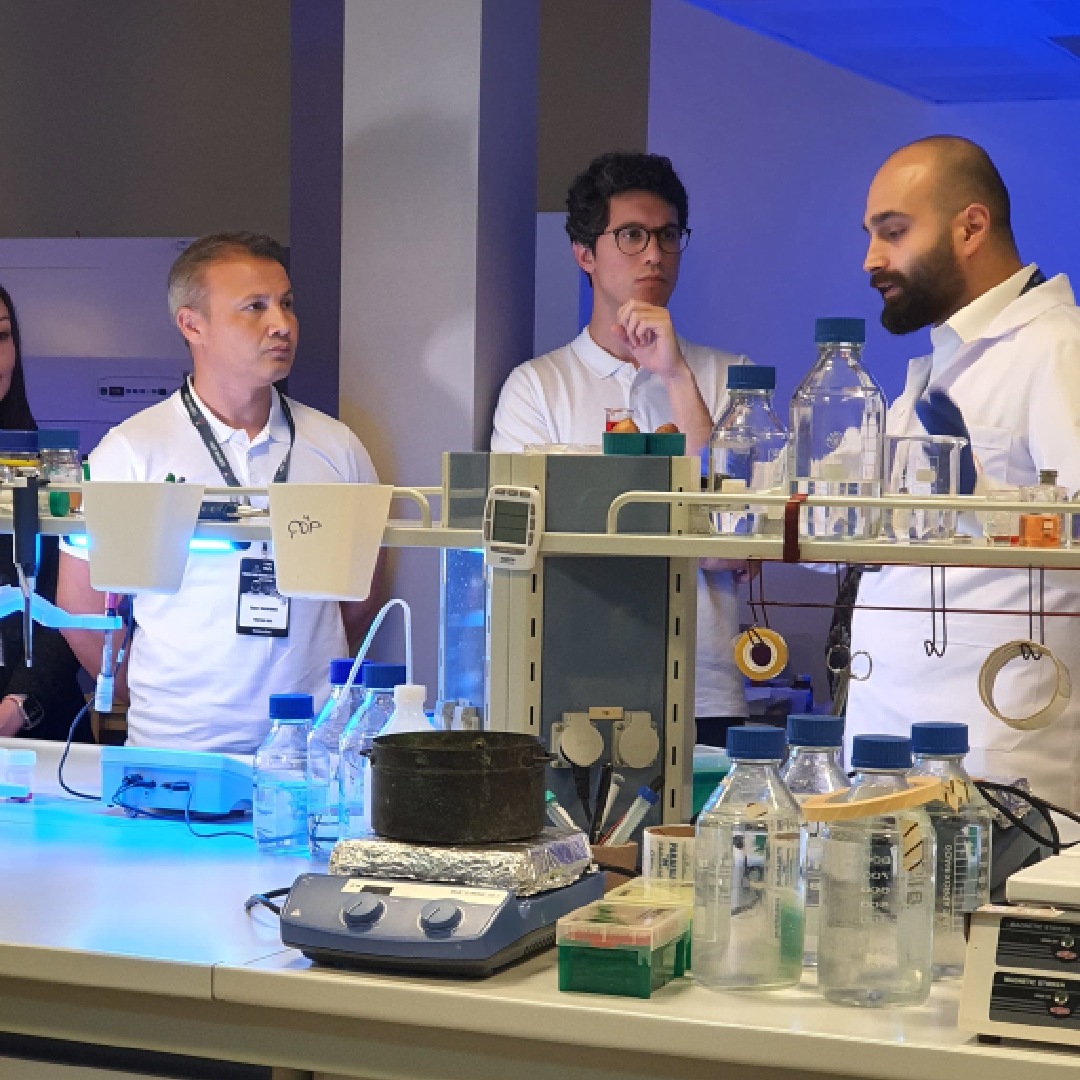
MIYELOID
Analysis of Effect of Radiation Exposure on Myeloid-Derived Suppressor Cells in Peripheral Blood
Hacettepe University
Prof. Dr. Güneş Esendağlı
Prof. Dr. Kerim Bora Yılmaz, Assoc. Prof. Dr. Erhan Güven, Hamdullah Yanık
The health of individuals on a space mission may be affected depending on the ultraviolet rays of the sun, galactic cosmic radiation, changes in gravity, the air they breathe and the ambient humidity. It is obvious that these people in space missions are faced with genetic mutations and cancer risk due to radiation effects in the long term.
MIYELOID research aims to determine how ultraviolet rays, galactic cosmic radiation, gravitational changes, breathing air and environment, all the challenging factors exposed during the space mission affect the immune system and blood production process of the astronauts.
Changes in the immune system are investigated specifically by comparing the properties and functions of myeloid type blood cells collected from the preflight and postflight blood samples taken from the AX-3 participant astronauts.
